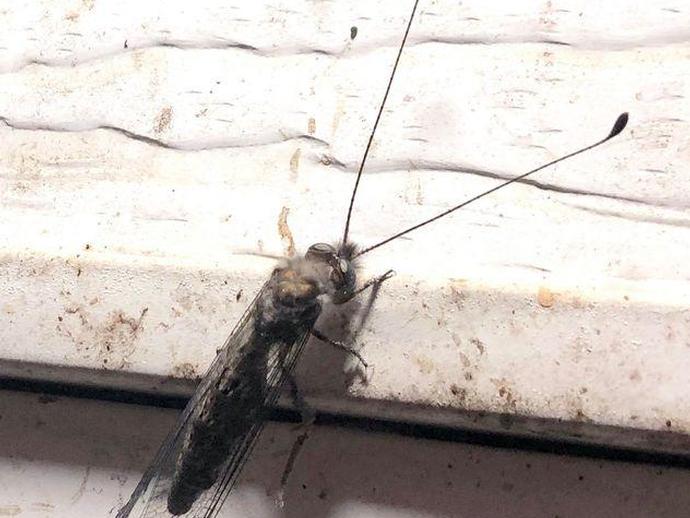July 10, 2021
We're reaching into the archives for today's #BenInNature update presented by our friends at Carter Bank & Trust! The following post was originally published on July 10, 2020.
Over the last couple of days, we've looked at two aerial predators that hunt by day. Let's close out the week by looking at an aerial predator that hunts in the evening: Ululodes quadripunctatus, the four-spotted owlfly.
While some owlflies are diurnal, meaning they hunt during the day, this species hunts at twilight. As you can see, owlflies are unusual insects, sort of resembling a cross between a dragonfly and a butterfly. They have long, clubbed antennae, bulging eyes, and they often rest on plants with their abdomens sticking straight out in order to camouflage themselves as twigs!
Owlflies are not closely related to dragonflies; they belong to the order Neuroptera, which means they're actually more closely related to a critter from a past nature post: the antlion or "doodle bug!"
Owlfly larvae are strange-looking; they resemble antlion larvae, with broad, flat bodies and giant fearsome mandibles. They're ambush predators, meaning that they hide in leaf litter or in vegetation and snap up insects that happen to wander past them.
Owlflies have a worldwide distribution and aren't uncommon, although speaking anecdotally, I don't see them very often. I saw one last year and one this year. Be sure to keep an eye peeled when you're walking past your porch light in the evenings!
ABOUT #BenInNature
Social distancing can be difficult, but it presents a great opportunity to become reacquainted with nature. In this series of posts, Administrator of Science Ben Williams ventures outdoors to record a snapshot of the unique sights that can be found in the natural world. New updates are posted Monday - Friday, with previous posts highlighted on the weekends. This series of posts is made possible thanks to the support of VMNH Corporate Partner Carter Bank & Trust (www.cbtcares.com).
NATURE PHOTO IDENTIFICATIONS
If you discover something in nature that you would like help identifying, be sure to message us right here on Facebook with a picture (please include location and date of picture) and we'll have our experts help you identify it!

 Hours & Admissions
Hours & Admissions Directions
Directions

